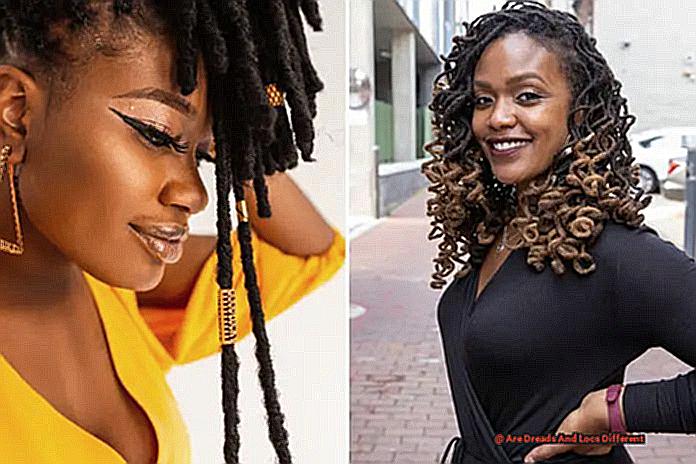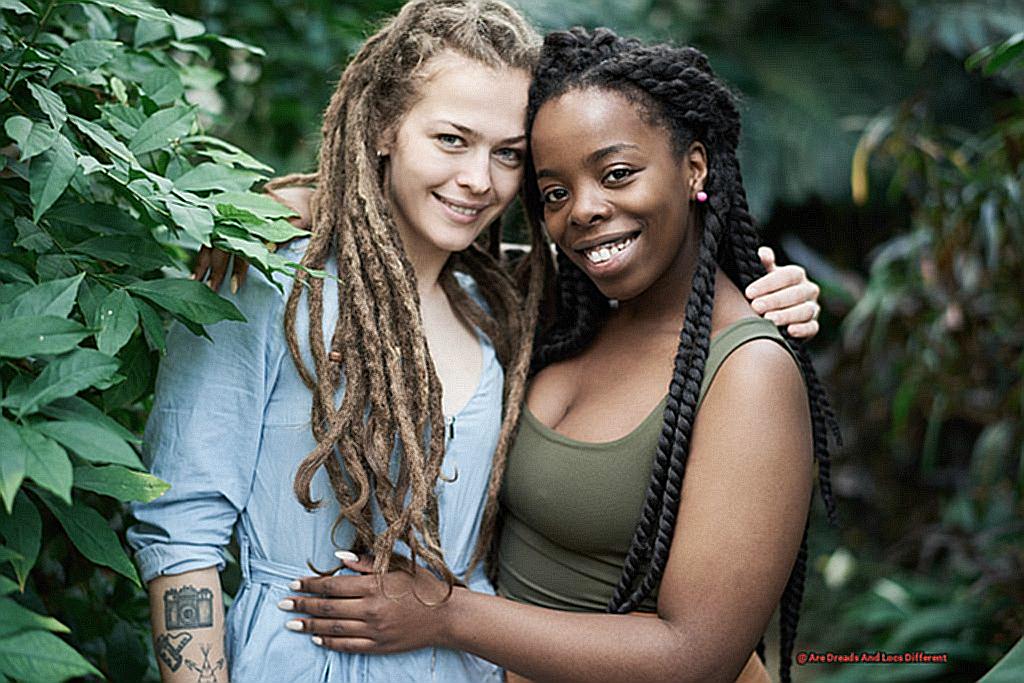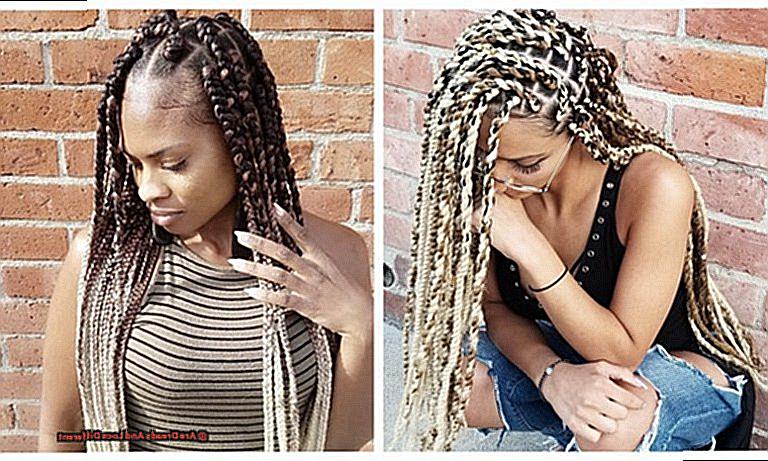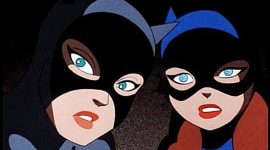
Are dreads and locs different?
It’s a question that has puzzled many hair aficionados. Sure, they may look alike, but dreads and locs are actually two unique hairstyles with their own special flair.
If you’re thinking about rocking one of these styles or just want to expand your hair knowledge, understanding the difference is key. In this blog post, we’ll dive into the nitty-gritty of dreads and locs – their origins, maintenance, and cultural significance.
So whether you’re a hair fanatic or simply curious about this topic, get comfy and let’s explore the captivating world of dreads and locs together.

Are dreads and locs different
Contents
- 1 Are dreads and locs different
- 2 The Creation Process: Dreads vs Locs
- 3 Maintenance and Care: Dreads vs Locs
- 4 Appearance and Texture: Dreads vs Locs
- 5 Cultural Significance: Dreads and Rastafarianism
- 6 Cultural Significance: Locs as a Celebration of Natural Hair
- 7 Perceptions and Stereotypes: Dreads vs Locs
- 8 Choosing Between Dreads and Locs: Factors to Consider
- 9 Styling Options for Dreads and Locs
- 10 Conclusion
When it comes to hairstyles, dreads and locs are often used interchangeably. However, there are subtle differences between the two that set them apart. As an expert, I’m here to shed some light on the key distinctions between dreads and locs. Let’s dive in.
Origins:
- Dreads: The term “dreadlocks” is believed to have originated from the Rastafarian movement in Jamaica. For Rastafarians, dreads hold spiritual and cultural significance, symbolizing a connection to nature and African roots.
- Locs: Locs, also known as “traditional locs,” have been embraced by various cultures worldwide as a celebration of natural hair and self-expression.
Formation Methods:
- Dreads: Dreads are typically formed by allowing the hair to naturally mat and tangle over time, often without the use of any products or techniques. This creates a more freeform and organic look.
- Locs: Locs can be created through various methods such as twisting, braiding, or interlocking the hair. These techniques encourage the formation of knots or mats, resulting in a more uniform and structured appearance.
Appearance:
- Dreads: Dreads are known for their unique and textured appearance. They often have a more loose and free-flowing look with individual strands visibly intertwined.
- Locs: Locs, on the other hand, tend to have a tighter structure with distinct sections. They appear more uniform and neat due to the intentional manipulation during the formation process.
Maintenance:
- Dreads: Dreads require less regular maintenance as they are allowed to naturally mat over time with minimal interference. However, occasional maintenance may be needed to separate any large knots or prevent excessive tangling.
- Locs: Locs require more frequent maintenance to keep the sections neat and prevent unraveling or frizzing. Regular retightening may be necessary to maintain their shape.
Versatility in Styling:
- Dreads: Dreads are incredibly versatile and can be styled in various ways. From updos and braids to ponytails and dread buns, there’s no limit to the creativity with dreads.
- Locs: While locs offer some styling options, their tighter structure may limit versatility compared to dreads. Styles like buns, twists, and loc extensions are popular choices for loc wearers.
Diverse Range of Individuals:
It’s important to note that dreads and locs are not exclusive to any particular race or culture. People from diverse backgrounds embrace both hairstyles as a form of self-expression and cultural appreciation.
The Creation Process: Dreads vs Locs
Dreads and locs are two unique hairstyles that have gained popularity for their natural and cultural appeal. While they may appear similar at first glance, the creation process and maintenance techniques differ, resulting in distinct looks. In this article, we will explore the similarities and differences between dreads and locs, shedding light on how these styles are created and maintained.
Similarities in Creation Process:
- Sectioning: Both dreads and locs start with dividing the hair into smaller sections. This step ensures that each strand can form individual knots or coils.
- Timeframe: The creation process for both styles requires patience and time as the hair naturally locks or coils over a period of weeks or months.
Differences in Creation Process:
- Methodology: Dreads are commonly created using techniques like “twist and rip” or backcombing. The former involves twisting each section tightly to encourage knot formation, while the latter involves combing the hair backward towards the scalp. On the other hand, locs are often formed through a process called “freeform” or “neglect,” allowing the hair to naturally coil and lock without much interference.
- Product Usage: Some individuals opt to use products like beeswax, rubber bands, or dreadlock wax to expedite the locking process or enhance the appearance of their dreads. However, such products are typically unnecessary for locs as they rely on natural development.
Maintenance Requirements:
- Regular Maintenance: Both dreads and locs require regular maintenance to keep them clean and well-groomed. This includes washing, conditioning, and separating any tangled or matted hair strands.
- Additional Maintenance for Dreads: Dreads may need more frequent maintenance, such as palm rolling or interlocking, to maintain their shape and prevent them from merging together.
- Minimal Maintenance for Locs: Locs, on the other hand, usually require less intervention as they are left to naturally grow and intertwine.
Maintenance and Care: Dreads vs Locs
Whether you’re a dreadhead or a loc lover, understanding the proper care routines is essential for keeping your hair healthy and looking its best.
Washing Frequency:
Both dreads and locs require regular washing to keep them clean and odor-free. However, the frequency may vary depending on personal preference and hair type. Generally, washing once every 1-2 weeks is recommended for dreads, while locs can be washed less frequently, every 2-4 weeks.
Product Usage:
Dreads often require the use of locking gels, waxes, or specialized products designed for maintaining dreadlocks. These products help tighten the dreads, control frizz, and promote a neater appearance. On the other hand, most people with locs prefer natural oils like coconut or jojoba oil to moisturize their hair and scalp.
Formation Techniques:
Dreads are typically created using backcombing or twist and rip methods, which involve sectioning the hair and tightly twisting or braiding it to form individual strands. This process makes dreads more prone to breakage, so extra care should be taken during maintenance. Regular palm rolling and residue-free shampoos can help keep dreads tidy and prevent unraveling.
Locs, however, can be formed naturally or through freeforming, where the hair is left to mat and lock on its own without manipulation. Locs require less maintenance compared to dreads as they form naturally. Regular cleansing is still essential to keep the scalp and hair healthy.
Retightening or Interlocking:
Dreads usually need periodic retightening sessions to incorporate new hair growth into the existing locks. This process involves using a tool to reposition loose hairs back into their respective dreads. In contrast, locs generally do not require retightening since they form naturally. However, interlocking can be done to tighten the roots of the locs if desired.
Appearance and Texture: Dreads vs Locs

Appearance:
- Dreads: Picture this – thick, rope-like strands of hair, tightly knotted together to create a structured and defined look. Dreads can vary in size, ranging from thin and delicate to thick and chunky. They often give off a rebellious or alternative vibe.
- Locs: Now imagine a more organic and free-flowing look. Locs are formed by allowing the hair to naturally coil and lock over time. They have a softer and rounded appearance compared to dreads. Similar to dreads, locs can come in various sizes, from tiny pencil-sized ones to larger, chunkier ones. Locs often exude a mature and spiritual vibe.
Texture:
- Dreads: When you touch dreads, you’ll feel their dense and firm texture. The tightly knotted strands create a substantial feel similar to ropes or cords. This texture gives dreads their signature look but can also make them heavier and less flexible.
- Locs: In contrast, locs have a softer and more pliable texture. Since they form naturally without excessive manipulation or tight knots, there’s usually more movement and flexibility in locs compared to dreads. This softer texture allows for a natural bounce and flow in the hair, giving it a lighter feel overall.
Now that we’ve covered the basics of appearance and texture, it’s essential to understand that both dreads and locs require regular maintenance to keep them looking their best. Some argue that dreads require more upkeep due to frequent retwisting and maintenance, while others believe that locs require less maintenance because they are left to form naturally. The specific maintenance routine can vary depending on individual preferences and hair types.
In conclusion, dreads and locs have distinct differences in appearance and texture. Dreads are known for their structured and defined look, with a dense and firm texture. Locs, on the other hand, have a softer and more organic appearance, with a pliable and lighter texture. Remember, both styles require attention and care to keep them looking fabulous. So whether you’re team dreads or team locs, embrace your unique style and rock it with confidence.
Cultural Significance: Dreads and Rastafarianism
Unlocking the Cultural Significance of Dreads and Rastafarianism
African Roots and Spiritual Commitment
- Dreads and locs, synonymous in popular culture, hold deep cultural and religious significance within the context of Rastafarianism.
- Rastafarianism, originating in Jamaica during the 1930s, is rooted in African culture and spirituality, emphasizing unity, equality, and the worship of Emperor Haile Selassie I as God incarnate.
- Dreadlocks symbolize spiritual commitment and a celebration of African heritage in Rastafarian culture.
- The term “dreadlocks” is believed to derive from “dreadful,” reflecting the awe and reverence associated with this hairstyle.
Resistance Against Western Beauty Standards
- Rastafarians view dreadlocks as a rejection of Western beauty standards and a means to embrace their natural selves.
- Dreadlocks represent a defiance of societal pressures to conform to Eurocentric ideals.
- By letting their hair grow naturally into dreadlocks, Rastafarians embody self-acceptance and celebrate their unique beauty.
Representation of Divine Connection
- Rastafarians believe that dreadlocks serve as a physical manifestation of their spiritual strength, resilience, and connection to the divine.
- The hair is considered an antenna that absorbs energy from the universe, enhancing spiritual awareness.
- Growing and maintaining dreadlocks is seen as a sacred journey that requires patience, dedication, and commitment.
Cultural Appropriation and Commodification
- While dreadlocks hold deep cultural significance for Rastafarians and other indigenous cultures globally, they have been appropriated and commercialized by mainstream culture.
- This appropriation has sparked debates surrounding cultural appropriation and the commodification of a sacred practice.
Cultural Significance: Locs as a Celebration of Natural Hair
Locs have been embraced by many communities worldwide, and their significance goes beyond just a hairstyle.
A Symbol of Heritage and Pride:
- Locs have been worn for centuries in various African cultures as a way to honor ancestors and maintain a strong connection to African heritage.
- They represent a celebration of one’s roots, embracing natural hair textures, and defying Eurocentric beauty standards.
- Locs allow individuals to express pride in their identity and celebrate the uniqueness of their hair journey.
Spiritual and Religious Significance:
- In Rastafarianism, growing locs is a sacred practice that embodies their faith and represents the biblical Nazarite vow.
- Locs are seen as antennas that connect believers to divine energy and serve as a physical manifestation of their spiritual connection.
Empowerment and Resistance:
- Locs have become a symbol of resistance against societal pressures to conform to Eurocentric beauty ideals.
- They empower individuals with African ancestry to embrace their natural hair texture and reclaim their identity.
- The natural hair movement has played a significant role in the resurgence of locs as a popular hairstyle, promoting self-love, acceptance, and empowerment.
Creative Expression:
- Locs offer versatility in styling options, allowing individuals to express their creativity through various adornments like beads, charms, or wraps.
- Each person’s loc journey is unique, reflecting their individuality and personal style.
Perceptions and Stereotypes: Dreads vs Locs
Understanding the Origins:
Dreads, originating from the Rastafari movement in Jamaica, symbolize a rejection of Eurocentric beauty standards and a celebration of African heritage. They are a spiritual and cultural statement, connecting individuals to their roots. On the other hand, locs embrace natural hair texture and promote self-acceptance.
Stereotypes Surrounding Dreads:
Unfortunately, dreads have been burdened with negative stereotypes. Some consider them dirty or unprofessional, while others associate them with rebellion. These stereotypes have perpetuated discrimination against individuals who choose to wear dreads as an expression of their identity.
The Power of Locs:
Locs are viewed as a more natural and organic approach to hair styling. They represent strength, pride, and individuality. However, even locs have faced discrimination in professional environments due to misconceptions about their cleanliness or unkempt appearance.
Challenging Biases and Promoting Acceptance:
It is crucial to recognize that dreads and locs are personal choices rooted in culture, spirituality, or personal beliefs. Stereotyping or discriminating against someone based on their hairstyle is unfair and perpetuates harmful prejudices. Education and awareness are key to debunking these stereotypes and fostering inclusivity.
Conclusion:
In our quest for acceptance and equality, it is essential to embrace diversity in hairstyles such as dreads and locs. By appreciating the cultural significance behind these hairstyles and challenging our biases, we can create a more inclusive society. Let us celebrate and respect individual choices, promoting a world that values and accepts everyone’s unique expression of identity.
Choosing Between Dreads and Locs: Factors to Consider
Choosing between these two distinct looks can be a difficult decision, but fear not. I’m here to help you weigh the factors and make an informed choice that suits your style and lifestyle. So, let’s dive in and explore the key factors to consider when deciding between dreads and locs.
- Maintenance: One of the crucial factors to consider is the level of maintenance required for each style. Dreads are typically created by backcombing or twisting the hair, while locs form naturally as the hair mats and locks on its own. Dreads may need more frequent maintenance to keep them neat and tidy, such as regular re-twisting or palm rolling. On the other hand, once locs have fully matured, they generally require less upkeep.
- Appearance: Another factor to ponder is the desired appearance of your hair. Dreads often have a more textured and voluminous look, with individual strands standing out. This style offers versatility, allowing you to wear your dreads loose and flowing or tightly pulled back. In contrast, locs have a distinct ropelike appearance that is smooth and uniform. If you prefer a more streamlined and consistent look, locs might be the right choice for you.
- Cultural significance: Both dreads and locs carry deep cultural significance. Dreads have been traditionally associated with Rastafarianism and reggae culture, symbolizing a connection to African heritage and spirituality. They are often seen as a powerful expression of personal identity and resistance against societal norms. Locs, on the other hand, have roots in ancient civilizations like Egypt and various African tribes. They symbolize strength, wisdom, and a connection to the earth.
- Personal preference: Ultimately, the decision between dreads and locs comes down to personal preference. Consider your lifestyle, desired level of maintenance, cultural significance, and personal style. Reflect on what resonates with you and aligns with your identity. Do you prefer the versatility and styling options that dreads offer, or are you drawn to the symbolism and natural beauty of locs?
Styling Options for Dreads and Locs
Great, because I’ve got all the tips and tricks you need to rock those dreads or locs with confidence and style.
Letting Them Hang Freely:
One of the simplest and most popular ways to style dreads and locs is to let them hang freely. This effortless look allows your locks to flow naturally, showcasing their beautiful texture and length. Whether you have short or long locks, this style is perfect for any occasion, from casual outings to fancy events.
Creating Updos or Buns:
Looking to switch things up? Updos and buns are fantastic options for adding some flair to your dread or loc style. You can easily achieve a chic updo by pulling your locks back and securing them with hairpins, clips, or rubber bands. From messy buns to sleek top knots, the possibilities are endless.
Adding Decorative Elements:
Want to make a statement? Adding decorative elements to your dreads or locs is a fantastic way to express your personal style. Beads, shells, feathers – you name it. These eye-catching accessories can be threaded onto individual locks, creating a unique and personalized look that reflects your personality and cultural heritage.
Shaping Them into Neat, Uniform Shapes:
If you’re after a more polished look, shaping your dreads or locs into neat, uniform shapes might be the way to go. Regular palm rolling can help maintain their shape and prevent frizz. You can experiment with different shapes like cylinders, squares, triangles – let your creativity run wild.
Maintenance Matters:
Remember, proper maintenance is essential to keep your dreads or locs looking their best. Regular washing, conditioning, and moisturizing will keep them healthy and prevent dryness and breakage. And don’t forget about re-twisting or re-interlocking periodically to maintain the desired shape and tightness of your locks.
So, whether you choose to let your locks hang freely, create stunning updos, add decorative elements, or shape them into neat forms, the options for styling dreads and locs are endless. Embrace your uniqueness, experiment with different looks, and rock those locks with confidence.
Conclusion
In conclusion, it is clear that dreads and locs are indeed different. While they may appear similar at first glance, their origins, maintenance methods, and cultural significance set them apart. Dreads, also known as dreadlocks, typically involve the intentional matting and twisting of hair to create a unique style. On the other hand, locs refer to the natural process of hair locking or forming into tight coils without manipulation.
Not only do dreads and locs differ in how they are formed, but they also have distinct maintenance routines. Dreads often require regular retwisting or palm rolling to maintain their shape and structure. In contrast, locs rely on minimal manipulation and tend to form naturally over time with little intervention needed.
Beyond their physical differences, dreads and locs hold different cultural meanings for various communities around the world. For many people of African descent, locs have deep roots in their heritage and are seen as a symbol of pride, spirituality, and resistance against societal norms. Dreads, on the other hand, have become more mainstream in recent years and are often associated with counterculture movements or personal style choices.
In conclusion, while dreads and locs may share some similarities in appearance, they are undeniably distinct entities with unique origins, maintenance practices, and cultural significance.


